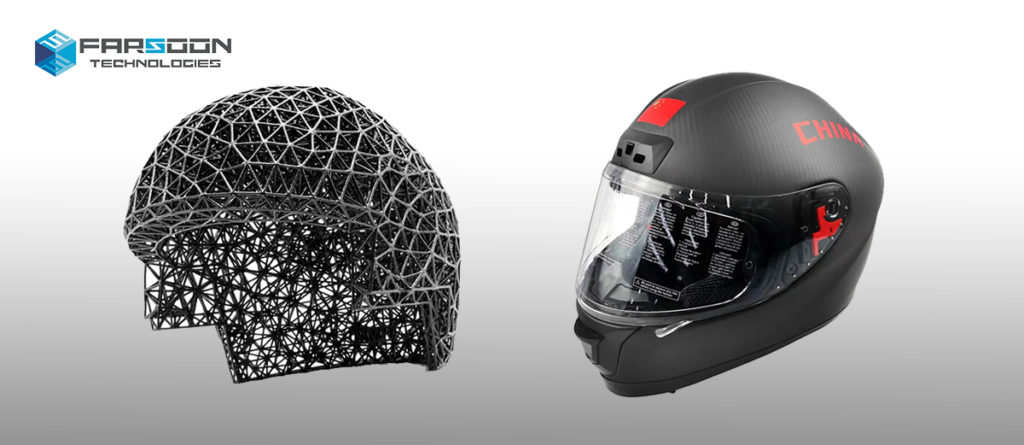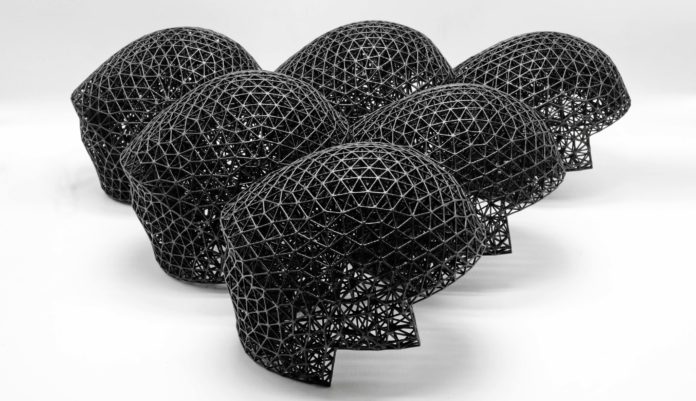Since the beginning of the 2022 edition of the Beijing 2022 Winter Olympic Games, the only adoption of 3D printing that has been revealed so far was in an advert. Machine manufacturer Farsoon shares today an interesting application that would guarantee athletes’ safety during one of the most iconic competitions: bobsled.
Described as the “Formular One on Ice”, bobsled is a racing of gravity-powered sleigh down a narrow, downhill track covered in ice by steering through twists, turns, and straight-aways.
The maximum racing speed can reach as fast as 160km/h, creating a few G-Forces in rapid acceleration or deceleration. In such high-speed situation, the safety of athletes is the top priority.
For this reason, helmets remain an essential part of the protection accessories but not any kind of helmets. The full-face bobsled helmets will require the safety, functionality, and of course comfort for the athletes under the challenging condition of speed and temperature, Farsoon explains. In this vein, a team of researchers led by Assoc. Prof. Li Nan of Dongguan University of Technology explored the use of AM for the development of helmets. This team also includes a team from Farsoon Technologies and Wanhua Chemical Group, suppliers of chemical innovative products.
“Mechanical strength, weight-reduction and customizable-fit – these are the key factors to achieve the best performance of the helmet,” says Li, “Compared to traditional manufacturing, 3D printing offers us more possibilities for design optimization and customization. We are proud to team up with the innovation leaders in the fields of 3D printing, material science and design prototyping, to create this brand-new bobsled helmet together.”
A manufacturing process based on open partnerships
The bobsled helmet lining is fabricated with Wanhua Chemical‘s specialized TPU material developed for the superb performance under the extreme temperature, and produced by Farsoon’s dual-laser Flight® Technology.
“In order to meet the requirement of excellent bearing capacity, impact resistance and shock absorption performance for the helmet lining, we specifically developed WF-PU95AB TPU material for Farsoon’s fiber laser sintering process.” says Dr. Yang Jie, Strategy R&D Manager of Wanhua Chemical. “We solved the challenging technical issues such as laser absorption, powder re-coating for TPU material processing; and achieved good physical properties including elasticity and flexibility even at a temperature as low as -35°C.”
Farsoon’s latest dual fiber laser Flight® Technology offers industrial-scale manufacturing turn-over with the TPU material; takes advantage of two powerful 300-watt Fiber lasers and two dynamic optical systems, creating two ultra-fine laser spots with fast scanning speed of up to 20m/s (66ft/s) for each. With the Flight 403P’s expanded cylinder size 400 × 400 × 450mm, two bobsled helmet linings can be produced in one build, of only 7.5 hours.
Also, thanks to the open parameter strategy offered with all Farsoon machines, Li worked closely with Wanhua and Farsoon application team to conduct tests of various parameter combinations integrating the laser power, scan spacing and layer thickness; to choose the best suited processing parameters balancing mechanical performance and weight requirement of the helmet lining lattice structure.
Customized lattice design for reduced weight & better protection
 Compared with the standard foam helmets available in limited sizes and fittings, the new generation of the helmet uses 3D scanning to collect the data for customizing the helmet lining lattice design to best fit each athlete’s head; it offers great gravity self-adaptation, and improve wearing comfort and safety during the competition.
Compared with the standard foam helmets available in limited sizes and fittings, the new generation of the helmet uses 3D scanning to collect the data for customizing the helmet lining lattice design to best fit each athlete’s head; it offers great gravity self-adaptation, and improve wearing comfort and safety during the competition.
The lattice structure developed by the bobsled helmet R&D team is composed of multiple layers and buffer zones with different hardness levels. Areas with higher collision frequencies are equipped with structural distribution of different densities, which can accurately absorb the damage caused by head collision. These impact zones were designed to resist the various impact forces of the helmet in the event of a collision, providing athletes with unprecedented protection performance.
The 3D printed lattice lining, together with the carbon fiber shell, weighs only 1.1 kg – achieves 500 grams weight reduction compared to the traditional foam helmet.
The new bobsled helmet has already passed GB and ECE certifications, and it meets the requirement of the FIS (Federation Internationale De Ski).
Remember, you can post free of charge job opportunities in the AM Industry on 3D ADEPT Media or look for a job via our job board. Make sure to follow us on our social networks and subscribe to our weekly newsletter : Facebook, Twitter, LinkedIn & Instagram ! If you want to be featured in the next issue of our digital magazine or if you hear a story that needs to be heard, make sure to send it to contact@3dadept.com






